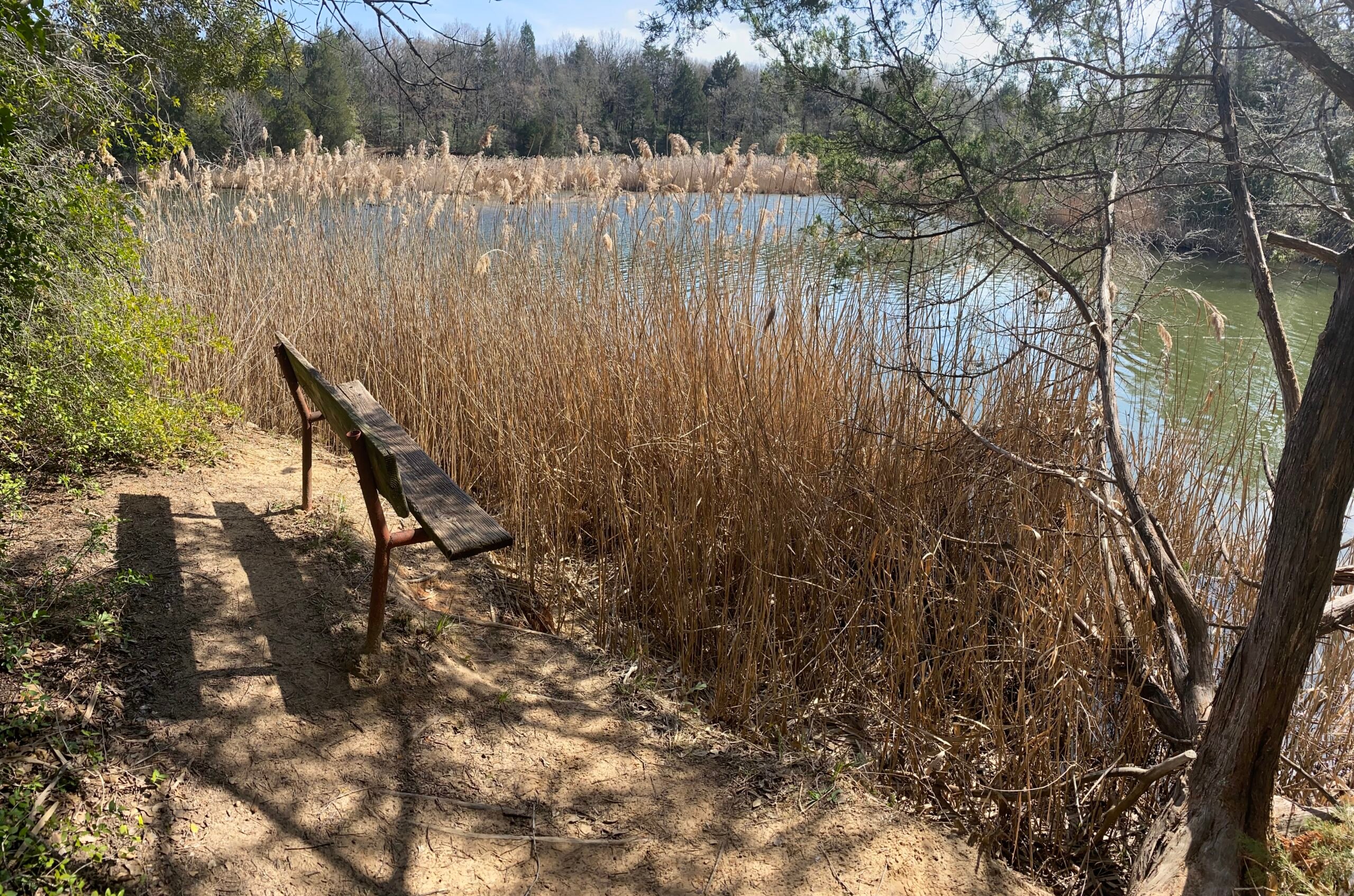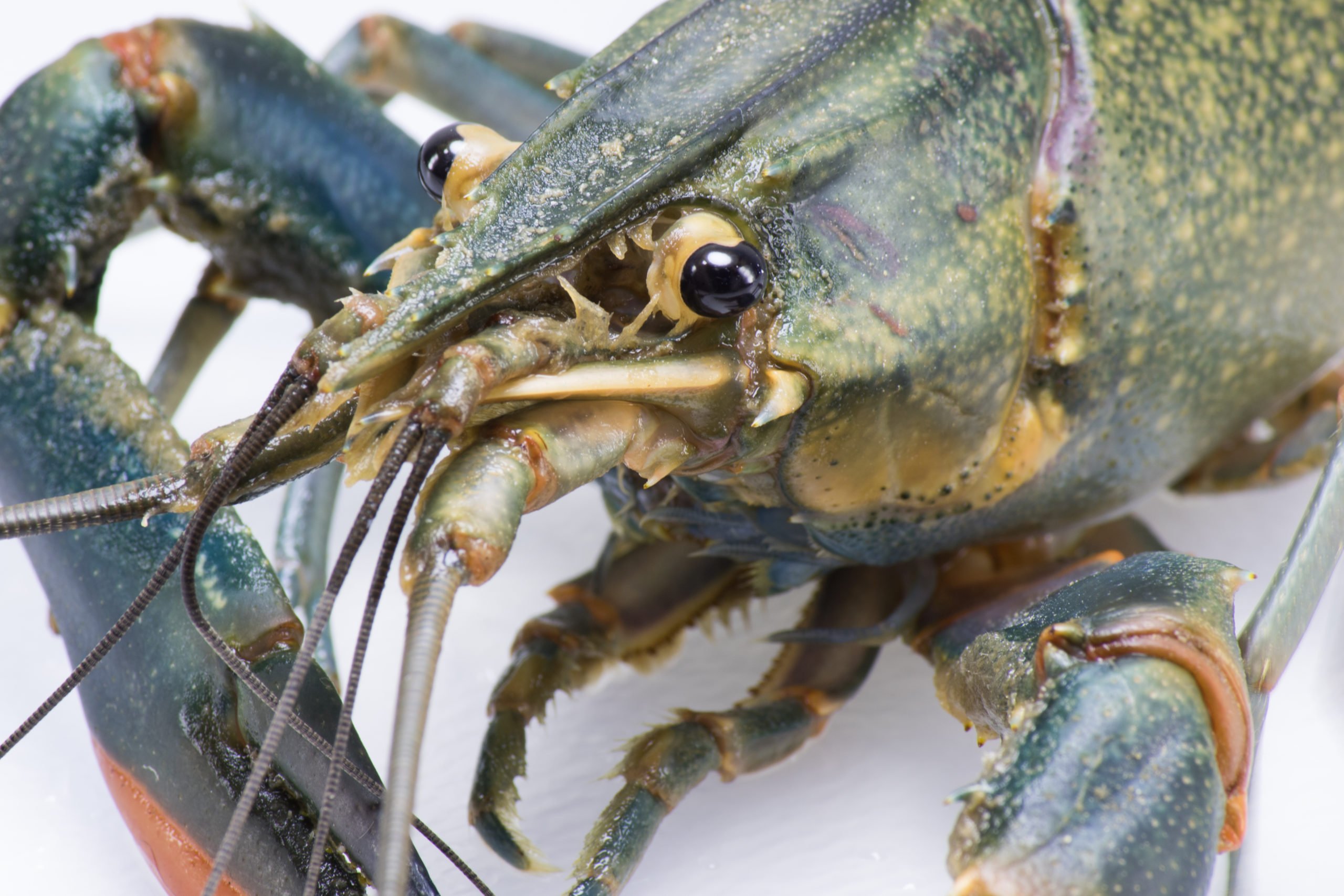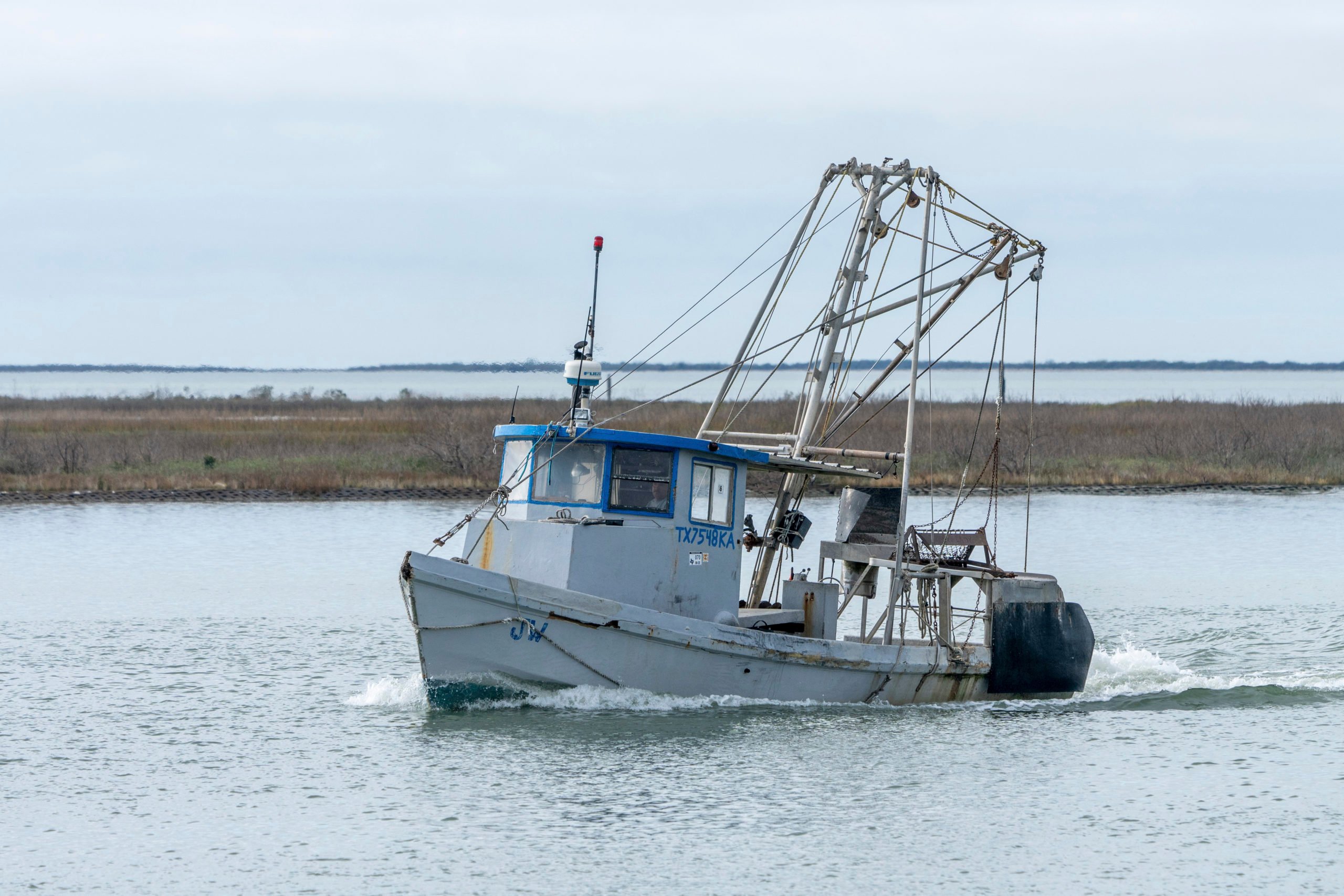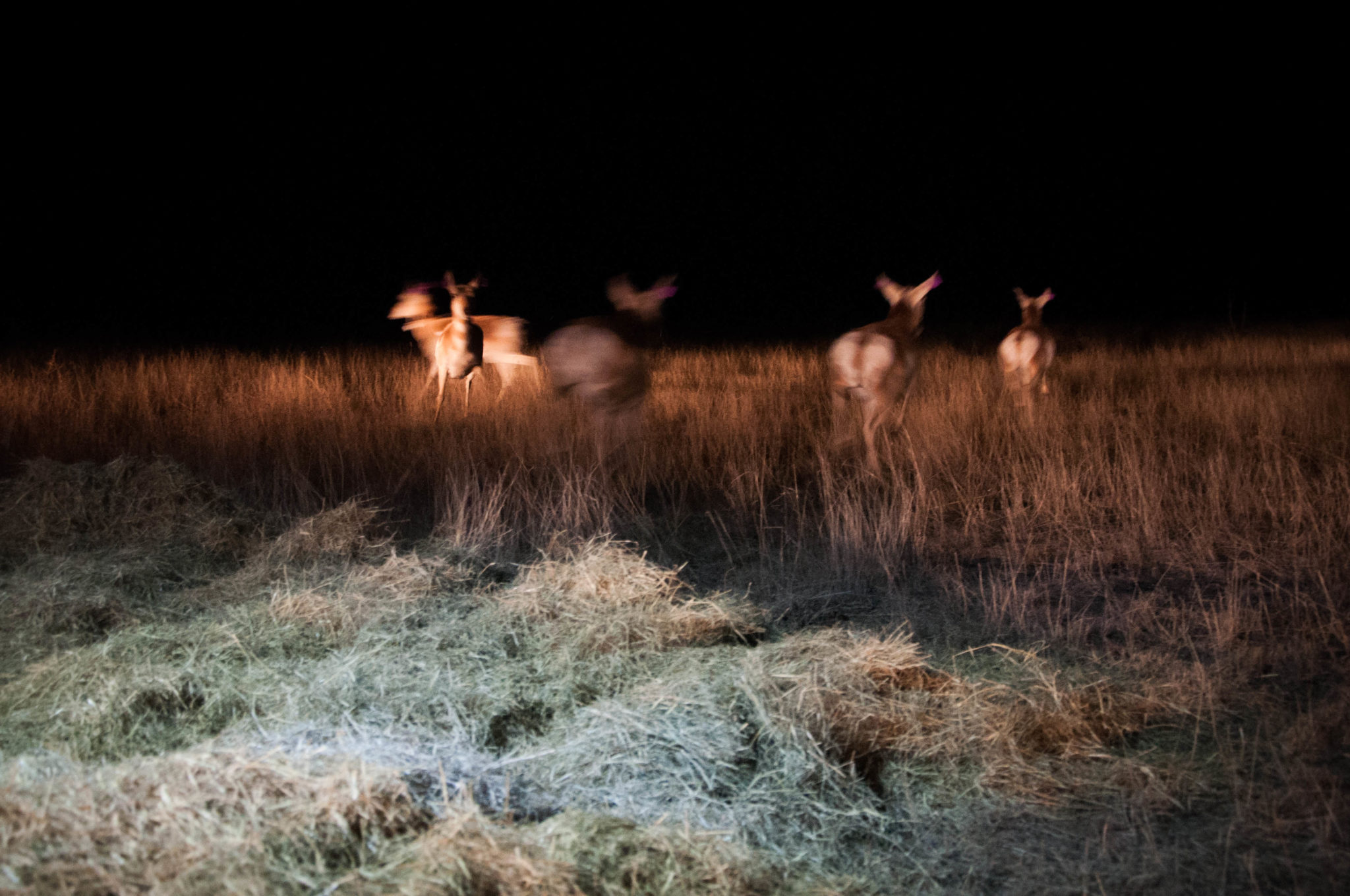
For Texas Pronghorn, an Unusual 500-Mile Journey
Wildlife experts are airlifting and trucking pronghorn into West Texas in hopes of replenishing a shrinking population.
For Texas Pronghorn, an Unusual 500-Mile Journey
Wildlife experts are airlifting and trucking pronghorn into West Texas in hopes of replenishing a shrinking population.
By Sasha Von Oldershausen
April 24, 2017
“We’ve got a dangler,” someone yells. As the low pulse of the helicopter advances, volunteers walk to one of four stations where folding tables have been set up side by side. Moments later, the helicopter appears, a line hanging from beneath with a bright-orange bag attached to its end. From the top of the bag, a head gingerly pokes out.
It’s a sunny afternoon in late January, and I’m on a ranch outside Pampa in the Texas Panhandle. Here, some 75 volunteers and scientists have gathered for an unusual wildlife operation: relocating pronghorn, the fastest land mammal in North America. The pronghorn dangling in the air above me is destined for West Texas, where the species has dwindled rapidly in the past decade. But first, the research team will give the animal a full medical workup.
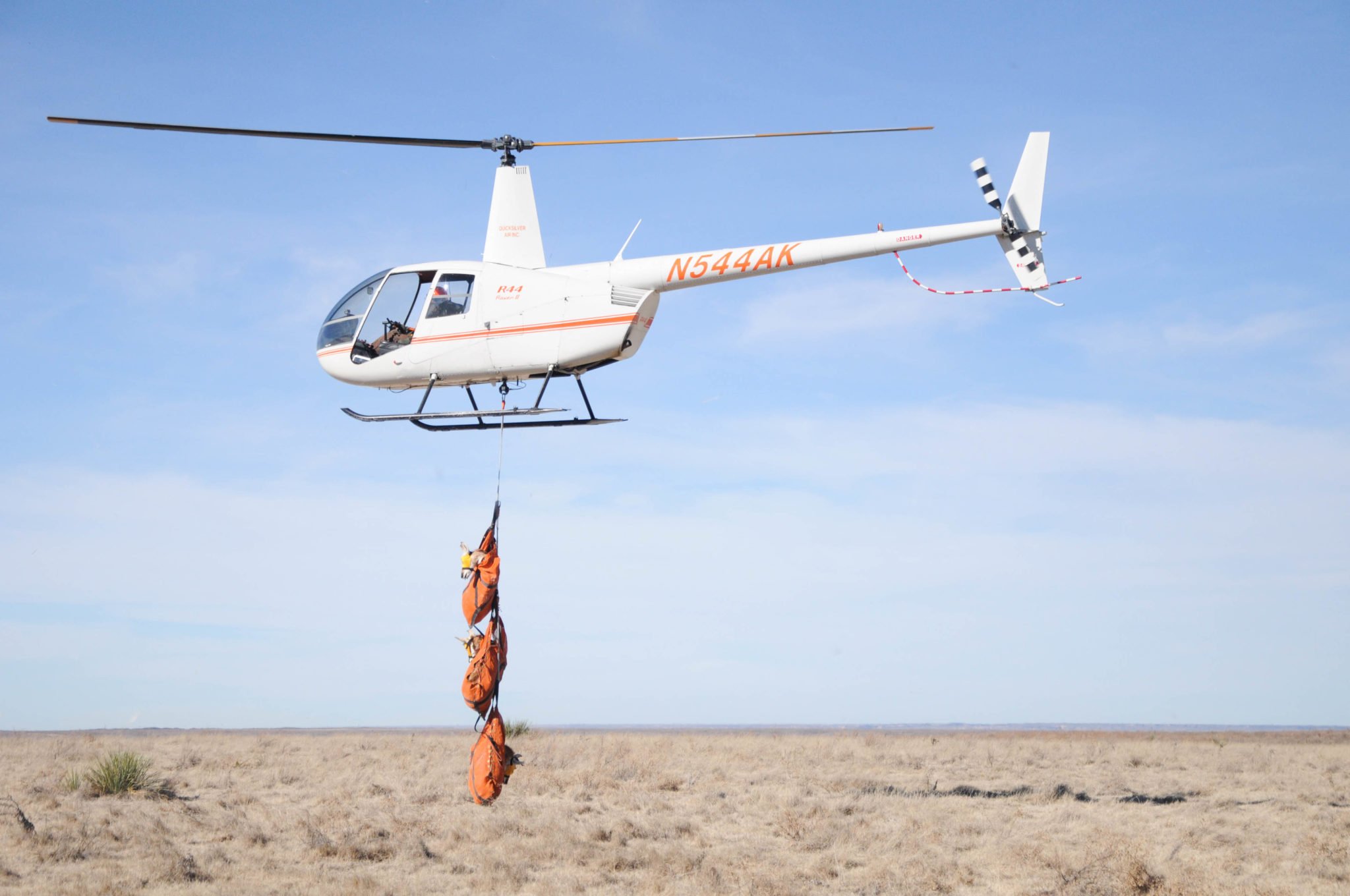
The helicopter carefully deposits the bag on the ground, and it lies motionless in the grass as two volunteers approach slowly.
Holding her at either end, they lift her up and carry her over to the tables. A blindfold obscures her sight, but she thrashes, her movement hindered by the leather belt that ties her spindly legs together.
The volunteers lay the pronghorn onto the table, on her side. Her hide smells musty and vaguely sweet, like clothes damp with rain. Her abdomen palpitates with fast panting and her black tongue lolls out of her mouth while a wildlife veterinarian hastily administers a series of injections — antibiotics, de-wormers and vitamins — and draws her blood. He sprays an abrasion on her skin with an aerosol bandage that shines like silver paint.
Next, a graduate student takes the animal’s temperature and collects a stool sample in a small plastic bag. Another student pierces both ears with a tag gun; the purple plastic tag bears the number 12. A third fits a bulky satellite collar around her neck.
The pronghorn lets out a nasal bleat, like a wookiee screaming, and thrashes again. Another volunteer pumps water into her mouth. At first, it dribbles out, but suddenly she takes to it. She shuts her mouth, her jaw moving in methodical circular motions as she swallows. It is a rare moment of calm.
The entire process takes no longer than a few minutes before 12 is transported again to the trailer, where 11 others have been contained. She bounds inside and rattles the metal walls. The door shuts and she falls silent.
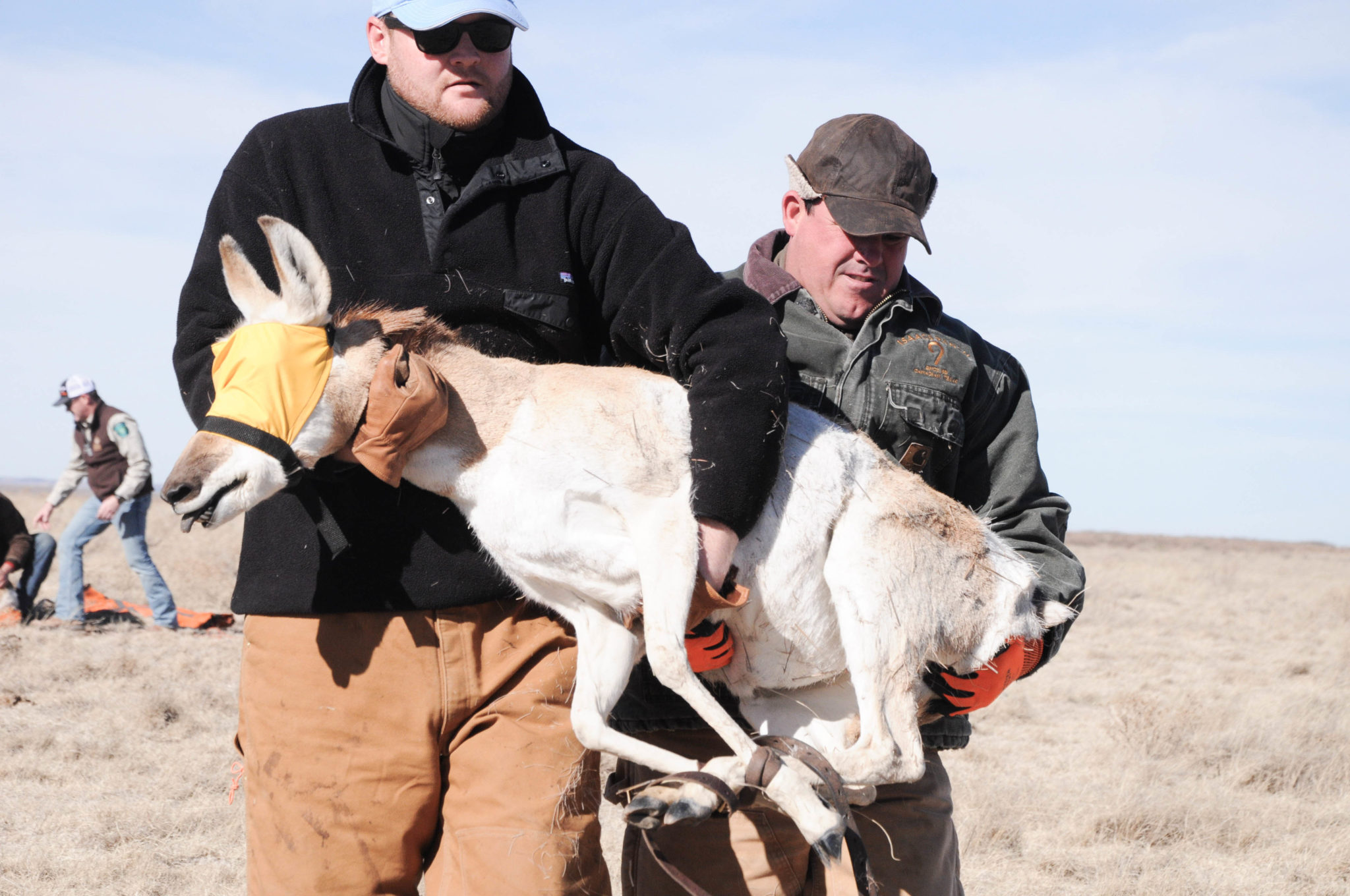
The capture is part of a pronghorn restoration project, spearheaded by a partnership among the Texas Parks and Wildlife Department (TPWD), the Borderlands Research Institute at Sul Ross State University and the Trans-Pecos Pronghorn Working Group, a group composed of area landowners, hunting guides and scientists. The project was started in 2011 in an effort to address the rapidly dwindling pronghorn population in the Trans-Pecos region of far West Texas.
The Trans-Pecos, which belongs to the vast, spare and seemingly inhospitable Chihuahuan Desert, previously supported 60 to 70 percent of the state’s pronghorn population, reaching a high of some 17,000 animals during the mid-1980s. Since then, their numbers have crashed. In 2011, the Trans-Pecos population reached a 30-year low of only 3,745 recorded animals.
Dan McBride, a veterinarian who owns a large ranch in the Trans-Pecos near El Paso, was one of the first to notice the depleting numbers. In 2009, he brought the issue to the attention of Shawn Gray, the mule deer and pronghorn program leader for TPWD. “It didn’t fall on deaf ears. They listened,” says McBride, who has earned the nickname “Dr. Pronghorn” for his efforts to protect the species.
That spring, McBride and Gray, along with others from TPWD and another wildlife veterinarian, visited the Evans Ranch outside Marfa. McBride had last visited the ranch in 1981, when, he says, its population of wild pronghorn was “uncountable.”
Thirty years later, their absence was striking. “We hung around all afternoon and we finally found one, and she looked pretty thin,” McBride says. “Shawn shot her and before she quit kicking, I had all these samples on her. Her blood was like Kool-Aid; it wasn’t even clotting” — a surefire sign that the pronghorn had parasites.
After taking blood samples, McBride says, he laid the pronghorn carcass on a tarp, where he looked inside its abomasum, the so-called real or fourth stomach of a ruminant. “I opened up her abomasum and about three of those guys with me got sick. You could not count the parasites,” McBride recalls.
Haemonchus contortus is also known as the barber pole worm for its tubular white uterus that spirals around its red, blood-engorged body, and is capable of producing up to 10,000 eggs. The barber pole worm has a long history of wiping out domestic herd animals in the Southwest. Now, it’s taking its toll on West Texas wildlife, too.
What’s unusual is that the barber pole worm typically thrives in warm, humid climates among dense concentrations of animals — not high desert like the Trans-Pecos. McBride and his fellow researchers eventually ascertained that a perfect storm of factors, exacerbated by human development, created unusual conditions in which the parasite could thrive in West Texas. One of the most critical elements was the fact that Texas was in the midst of a historic drought. The scientists speculated that pronghorn were all congregating near the same few water sources and that the dense concentration might have helped foster the parasite.
“Our highways, our railroads, our fences … they contain those animals a lot more than they did historically,” says Louis Harveson, director of the Borderlands Research Institute. “So when pronghorn were here 100 years ago, they could have smelled that rain and they probably would have gone around 100 miles to find [it].”
McBride, Harveson and their colleagues at TPWD ultimately determined that they had to act. “We finally came to the conclusion like, if we don’t do something, we’re going to lose these animals. And so, the landowners basically said, ‘Well, what can we do? Let’s raise some money and do a restock, a translocation,’” Harveson says.
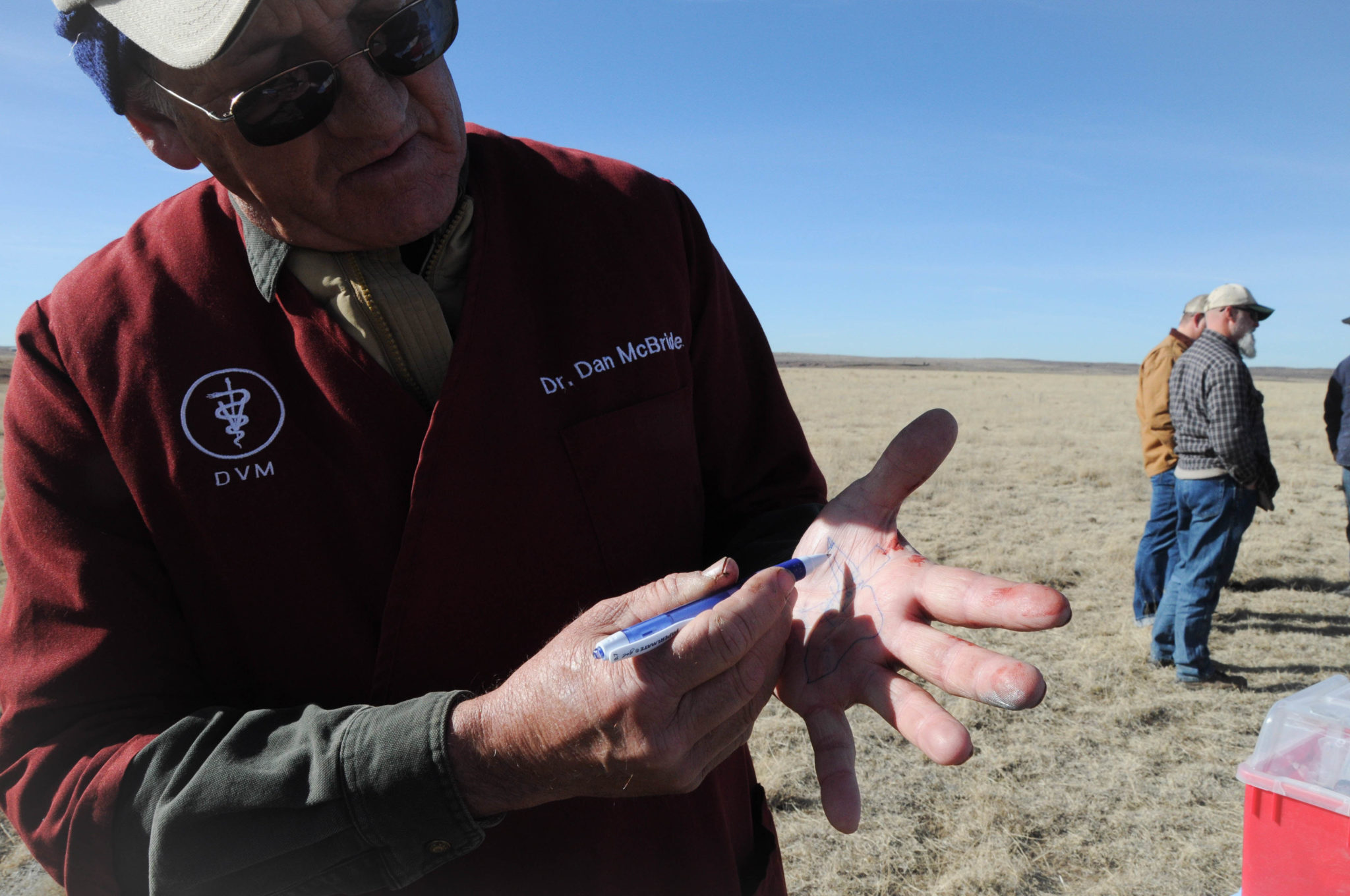
The support the working group received was unprecedented. They held a fundraiser with hopes of raising $25,000, but managed to collect around $100,000 in one night, Harveson says. In addition to more than $1.5 million in TPWD funding, local safari clubs and garden clubs stepped up. “From that point on, we knew that this was kind of a rally cry for the species and what it symbolizes for this region,” Harveson says.
They’re dipping into the population that resides in the Texas Panhandle, where pronghorn numbers have remained strong, perhaps owing to the region’s farms, which provide the pronghorn with plenty of food. In fact, many landowners around Pampa would prefer if there were fewer pronghorn. “We alleviate the problem here, and we move them down there, where we’re trying to rebuild that population,” Harveson says.
Meanwhile, back at the ranch in Pampa, the group has mapped out a couple of herds, each comprising several hundred pronghorn. A pilot flies his helicopter above the herds while a man called a mugger deploys a net gun. Once a pronghorn is captured, the mugger gets out of the helicopter, quickly administers an antipsychotic “to take the edge off,” McBride says, and heaves the pronghorn into a bag.
“They’re tough, they’re survivors; they’ve nearly been blinked out and they’ve come back. And there aren’t very many things prettier running across a prairie than a group of pronghorn.”
Then they deliver the pronghorn to a nearby staging area. Once the waiting trailers are filled with 25 to 30 pronghorn, they’re immediately driven eight hours to a ranch outside Marfa.
The project has released 636 pronghorn into the Marfa and Marathon area since it began in 2011. The first translocation was met with unforeseen challenges; unbeknownst to the researchers, they’d transferred the animals amidst historic drought conditions, and several died as a result. But since then, the team has conducted four more captures and managed to transfer animals with an 80 percent survival rate. They aim to capture mostly females, which can help boost the population growth. The end goal is to have translocated some 1,000 pronghorn to the Trans-Pecos.
“Pronghorn are an icon of the American West,” McBride says. “They’re tough, they’re survivors; they’ve nearly been blinked out and they’ve come back. And there aren’t very many things prettier running across a prairie than a group of pronghorn.”
Though often conflated with the African antelope, the pronghorn is entirely unrelated to the species. In fact, indigenous to the American West, the pronghorn has no close relatives. It is the only species of its kind.
Meriwether Lewis and William Clark were among those who mistakenly referred to the animal as an antelope, as recorded in their expedition journals: “… he is more like the Antilope or Gazella of Africa than any other Species of Goat,” Clark wrote from South Dakota on September 14, 1804.
Days later, Lewis would remark on the pronghorn’s speed: “I beheld the rapidity of their flight along the ridge before me it appeared reather the rappid flight of birds than the motion of quadrupeds.”
The pronghorn evolved to outrun the cheetah, now extinct from the region, and can run at speeds around 55 mph. “They look like a flock of birds on the ground, the way they turn together,” McBride says, echoing Lewis and Clark. “There’s nothing more graceful, there’s nothing more speedy.”
At the turn of the 20th century, the pronghorn population in North America had nearly been eradicated, thanks to commercial hunting practices. “The club is very much concerned about the fate of the pronghorn antelope which appears to be everywhere rapidly diminishing,” wrote the chairman of the Boone and Crockett Club, a hunter-conservationist group founded by Teddy Roosevelt, to Secretary of the Interior Walter Fisher in 1911. The club rallied politicians to support legislation and regulations that would limit hunting and establish public lands for pronghorn to roam, thanks to which the pronghorn population rebounded to the more than 500,000 that exist in the United States today.
But the Boone and Crockett Club is predicated on a curious irony inextricably tied to the management of game species: At the root of this kind of wildlife conservation is a lust for the hunt.
McBride, who both deeply reveres animals and loves hunting them, is the human embodiment of this paradox. He’s the kind of guy who reads Ernest Hemingway’s bullfighting stories and James Herriot, the British veterinarian who penned a series about the life of a country veterinarian, with innocuous titles like All Creatures Great and Small. McBride alternates between telling me the unique physiological features of the pronghorn, its elegance and grace, and scrolling through photos on his phone of trophy kills he stuffed and mounted himself.
“To separate those two seems difficult perhaps for you,” he says. “But that dominion we were given over animals is that it can be both care, which I do as a veterinarian, and it can still be in your pursuit of a trophy as a wild animal.”
“Hunters are the original conservationists,” says Harveson, and in a sense, he’s right. One of the most significant sources of wildlife conservation funding comes from an excise tax on the sale of ammunition and firearms. The Pittman-Robertson excise tax was created in 1937 as a means of addressing wildlife populations that were rapidly dwindling due to excessive hunting. The gun industry rallied for the law to pass. After all, how can you sell guns when there is nothing left to hunt?
“If we let Mother Nature take its course, we would probably have half the number of pronghorn we do today.”
In 2016 alone, the U.S. Fish and Wildlife Service distributed more than $695 million from the tax toward conservation efforts. Texas received $32 million, more than any other state.
The pronghorn capture carries its own financial implications. “They’re a game animal; landowners can also make money off the hunts,” says TPWD’s Shawn Gray. “There’s the whole conservation side of it, which goes into the hunting side. It all goes together.”
The translocation project represents only part of the efforts to reinstate the population, along with raising fences so that pronghorn can crawl under them. There’s also “predator management,” a euphemism for killing predator species, such as coyotes, bobcats and foxes, that prey on the young fawns, which are so crucial to their restoration.
The pronghorn restoration project is nothing if not a reminder of the tremendous impact humankind has had on wildlife habitats. It’s because of development that the pronghorn population got to this point in the first place, and now their survival relies on us, too. Part of that means playing God, eliminating the presence of other species that represent a threat. But the alternative is even bleaker: “If we let Mother Nature take its course, we would probably have half the number of pronghorn we do today,” Harveson says.
At 2 a.m., the livestock trailer pulls off to the side of a ranch road some 15 miles west of Alpine and comes to a halt. We step out of our vehicles and congregate beside the trailer, illuminated by the headlights beaming from cars parked in the grass. Two men open the gate of the trailer as we stand by, shivering. It is a brisk February night and we are here to release the pronghorn in their new home.
I’m surprised when the pronghorn don’t immediately rush out. Peering around the trailer’s edge, I look inside: The pronghorn remain hunkered down in the hay, bleary-eyed and dazed.
Biologist Mike Sullins tries to coax the pronghorn out of the trailer. “Come on,” he says. “It’s a brave new world out there.” Another man climbs into the trailer and goads them on. Moments pass and then they filter out — first one, then several more, flitting with ease. They pause for a moment before slipping into the dark cover of night.
Before this moment, I’d only seen the pronghorn with their legs tied, and I’m struck by their grace, the lithe and soundless way they bound from the pen. After they’ve all scattered from the first chamber, the two men open the second chamber, where another 10 or so pronghorn are on their hindquarters. Again, it takes a moment for them to reckon with their freedom.
As the last of the pronghorn escape, one remains — a petite fawn standing tenuously on rickety legs. She staggers forward, turning her head uncertainly.
We stand back, watching her slowly approach the point of darkness that we cannot see past, where the other pronghorn now reside. “If anyone’s gonna get eaten, it’s her,” I hear one man say matter-of-factly under his breath. Finally, when we can no longer see her tan figure in the dark, we pile back into our cars and head home.
Featured photo: After an eight-hour drive from Pampa to a ranch outside of Marfa, the pronghorn are released into their new home under the cover of night.
